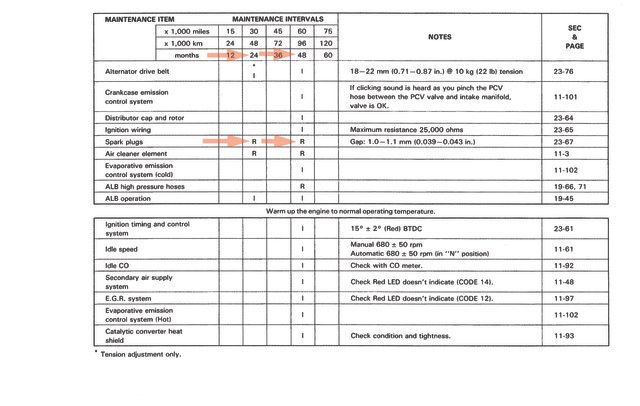I've owned my '87 Acura for over 16 years and I never noticed this until a few days ago.

Not that I'm stressing over it, but why would Honda specify spark plug replacement based on time (...or mileage, which ever occurs first)? The only reason I can think of is removal difficulties may arise after long periods of time have elapsed; seized threads, etc. I've always based plug replacement intervals on mileage.

Not that I'm stressing over it, but why would Honda specify spark plug replacement based on time (...or mileage, which ever occurs first)? The only reason I can think of is removal difficulties may arise after long periods of time have elapsed; seized threads, etc. I've always based plug replacement intervals on mileage.
